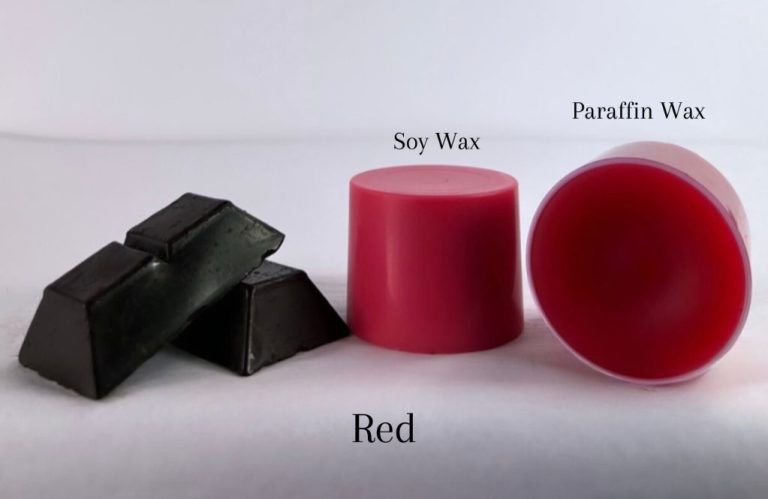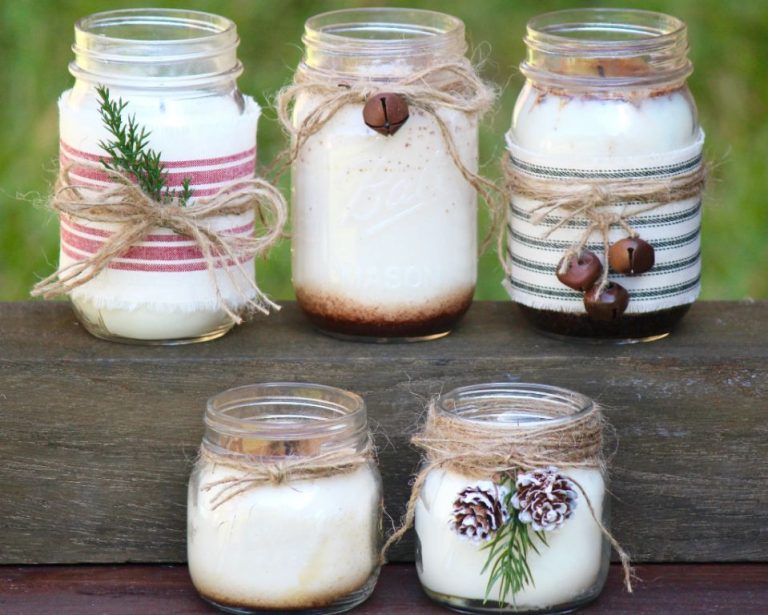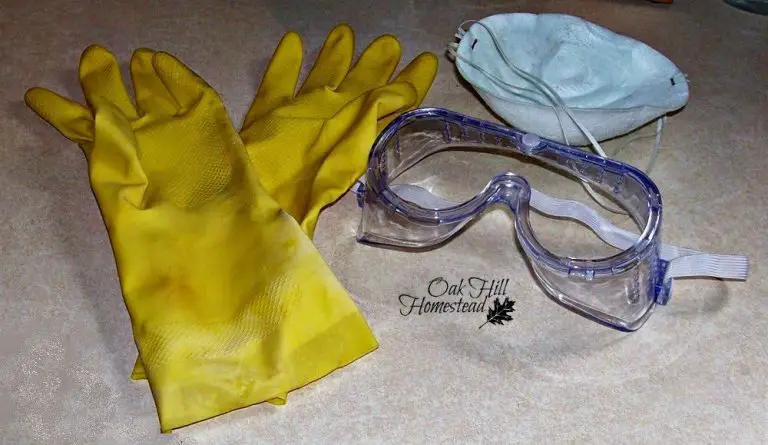What Can I Use To Make A Wick?
A wick is a piece of material that brings fuel to the flame in candles, oil lamps, and other devices that provide illumination. The wick is one of the key components that allows these devices to produce a steady flame.
The purpose of the wick is to draw up and deliver fuel to the flame by capillary action. In a candle, the wick is usually made from braided cotton. As the flame melts the wax near the wick, the liquid wax travels up the wick to provide more fuel. With an oil lamp, the wick draws up oil. This continual supply of fuel sustains the flame. Without a proper wick, the candle or lamp would quickly burn out or produce an uneven flame. The capillary action of the wick, along with its shape and texture, controls the size and temperature of the flame.
A good wick is crucial for consistent and controlled burning. Wicks are typically made of materials that can endure high temperatures without burning up too quickly. The thickness of the wick also impacts how fast the fuel is drawn up. An ideal wick evenly feeds just enough fuel to produce the desired type of flame for the application.
Cotton
Cotton is the most common wick material used for candle making. It is affordable, easy to find, and burns evenly with a bright flame. There are a few types and sizes of cotton wicks to choose from:
Plain cotton wicks are made from tightly braided or twisted strands of cotton fiber. They come in different diameters like large, medium, and small. Larger wicks are used for containers with wide mouths, while smaller wicks are best for narrow containers (Source).
Pre-waxed cotton wicks are coated in wax so they stand upright in the candle wax. The wax coating also helps the wick curl as the candle burns. Common pre-waxed wick sizes are 4″ and 6″ (Source).
Organic cotton wicks are unbleached and free of chemicals. They are considered eco-friendly and clean burning (Source).
Wooden Wicks
Wooden wicks are a popular option for candle making. As the name suggests, they are made from wood fibers, typically wood pulp or bamboo (source). The wood fibers are compressed together to form the wick.
One of the unique properties of wooden wicks is that they make a light crackling or popping sound when they burn. This occurs because the wood fibers expand and contract as they heat up and cool down, creating small explosions. The crackling creates a pleasant, natural ambiance. It also helps the melted wax pool and prevents tunneling.
In addition to their auditory benefits, wooden wicks are stiff and upright. This allows for full, even burning and wax pooling.
Paper
One readily available household item that can be transformed into a homemade candle wick is paper. Most homes likely have some type of paper on hand, whether that’s printer paper, craft paper, tissue paper, notebook paper, etc. With just a few simple steps, strips of paper can be rolled, twisted, or braided into a serviceable wick for a candle or oil lamp.

The key with using paper is to cut or tear it into thin, narrow strips. Wider strips likely won’t burn as cleanly or evenly. Aim for strips no wider than 1/4 inch. The length can vary based on the container – just make sure to leave enough excess wick to anchor it in the wax or oil. Paper with thin fibers like tissue paper or newsprint may work better than heavy cardstock.
To make the wick, take multiple paper strips and twist or braid them together tightly. This helps strengthen the wick and prevent fraying as it burns. Roll one end between your fingers to create a tapered tip, which will burn more evenly. Secure the other end to your container with a bit of melted wax or a strip of tape. Adjust the wick height as needed for optimal burning.
Paper wicks are generally suitable for small candles and oil lamps, and as emergency substitutes when no other wicking materials are on hand. With some simple preparation using common household paper, strips can provide a quick homemade solution.
Rope
Cotton, hemp, or jute rope can all be used to make wicks. Rope fibers tend to be tightly wound and provide great capillary action for wicking oils or fuels. Making a wick out of rope involves unraveling the rope into individual strands. This helps increase surface area and allows more efficient fuel absorption. The rope strands can be braided, twisted, or bundled together to create a sturdy wick that will not fray as easily. When choosing a rope material, cotton or hemp ropes are good options as they are soft, absorbent, and burn evenly. Hemp rope in particular makes excellent wicks due to its durability and slow burning properties. Jute rope can also work but may produce more smoke when burnt. To prepare a rope for wicking, it should be boiled in water first to remove any chemical residues. The key is finding a rope made of natural fibers that will absorb fuel well and provide a consistent burn. With some preparation, rope can make an effective homemade wick for various applications.
Fabric Strips
Old shirts, socks, rags, and other fabric items can easily be turned into candle wicks by cutting or tearing them into long, thin strips. Look around your home for any worn-out, damaged, or stained fabrics made of natural materials like cotton, linen, or wool. Avoid using synthetic fabrics like polyester since they may melt under a flame. Cut or tear the fabrics into strips approximately 1/4 inch wide. The length of the strips can vary based on the size of your candle and container, but 8-12 inches is a good standard size. Fabric wicks are soft, flexible, and burn slowly and evenly. They tend to leave little soot or odor, making them a great eco-friendly option. Just be sure to trim the wick to 1/4 inch before lighting to prevent excess smoking.
Shoelaces
Cotton shoelaces work well for wicks because they are made of absorbent material. The fibers in cotton shoelaces soak up e-liquid and allow it to flow to the heating coil. According to Authentic Vandyvape vp Cotton Lace Shoelace Wicks x 10, cotton shoelaces like the Vandy Vape VP Cotton Laces are a popular choice for vaping enthusiasts. The cotton material provides great flavor and longevity. Shoelace-style wicks are easy to install and replace when needed.
Twine
Twine is a versatile option for making wicks. There are a few different types of twine that work well:
Jute twine is made from the jute plant. It’s affordable, natural, and burns evenly. Some people prefer jute twine for candle wicks because it doesn’t release toxins when burned like synthetic options can (1).
Hemp twine is another natural choice made from hemp fibers. Like jute, it has a natural look and burns cleanly. Hemp wicks tend to be thicker than cotton (2).
Cotton twine is made of spun cotton fibers. It’s soft and flexible. Cotton twine wicks need to be thicker since the fibers don’t hold as much wax. But cotton burns slowly and doesn’t give off smoke (3).
All of these natural fiber twines can work well for homemade candle wicks. They’re easy to find and create an artisanal look.
(1) https://www.candlescience.com/learning/choosing-wick-materials
(2) https://bescalefactory.com/blogs/besca-academy/hemp-vs-cotton-wicks-for-candles-which-is-better
(3) https://www.candlescience.com/learning/choosing-wick-materials
Wool Yarn
Wool yarn, especially from breeds like merino, can make an effective wick for candles and oil lamps. The natural fibres provide a slow, even burn. According to Science of Wool, wool naturally resists flames and has fire safety benefits. However, wool does require more maintenance than other wick materials. The oils in wool can clog a wick over time, so regular trimming is necessary. Proper storage and occasional washing is also recommended.
Overall, wool yarn produces a clean, even flame but needs extra care compared to synthetic or plant-based wicks. With the right maintenance, wool’s fire resistance makes it a good option.
Conclusion: Which Are The Best Wick Options
All of the wick materials discussed have advantages and disadvantages depending on the needs of the particular candle or lamp you are using them for. However, when considering ease of use, availability, cost effectiveness, and performance – cotton, paper, and cotton rope or twine tend to be some of the best options for most homemade candle wicking projects.
Cotton is a versatile material that is inexpensive and readily available. String, yarn, thread, and even strips of cotton fabric can all make decent wicks. Paper, especially braided paper, creates a good wick that curls as it burns to maximize melted wax uptake. Paper wicks are also very affordable and easy to make at home.
For traditional wax and oil candles, cotton rope and twine are hard to beat. The fibers provide excellent capillary action to deliver fuel to the flame. The twisted strands form a rigid wick that stands upright as the wax melts. Cotton rope and twine can often be found around the home, or purchased very cheaply. With the right wicking size for the candle diameter, they burn nicely without mushrooming.
When choosing a homemade candle wick, consider the candle’s purpose and pick a material that balances safety, cost, performance and ease of use. With a variety of common household items, creative candle makers can find or make effective wicks to light up their homemade creations.






